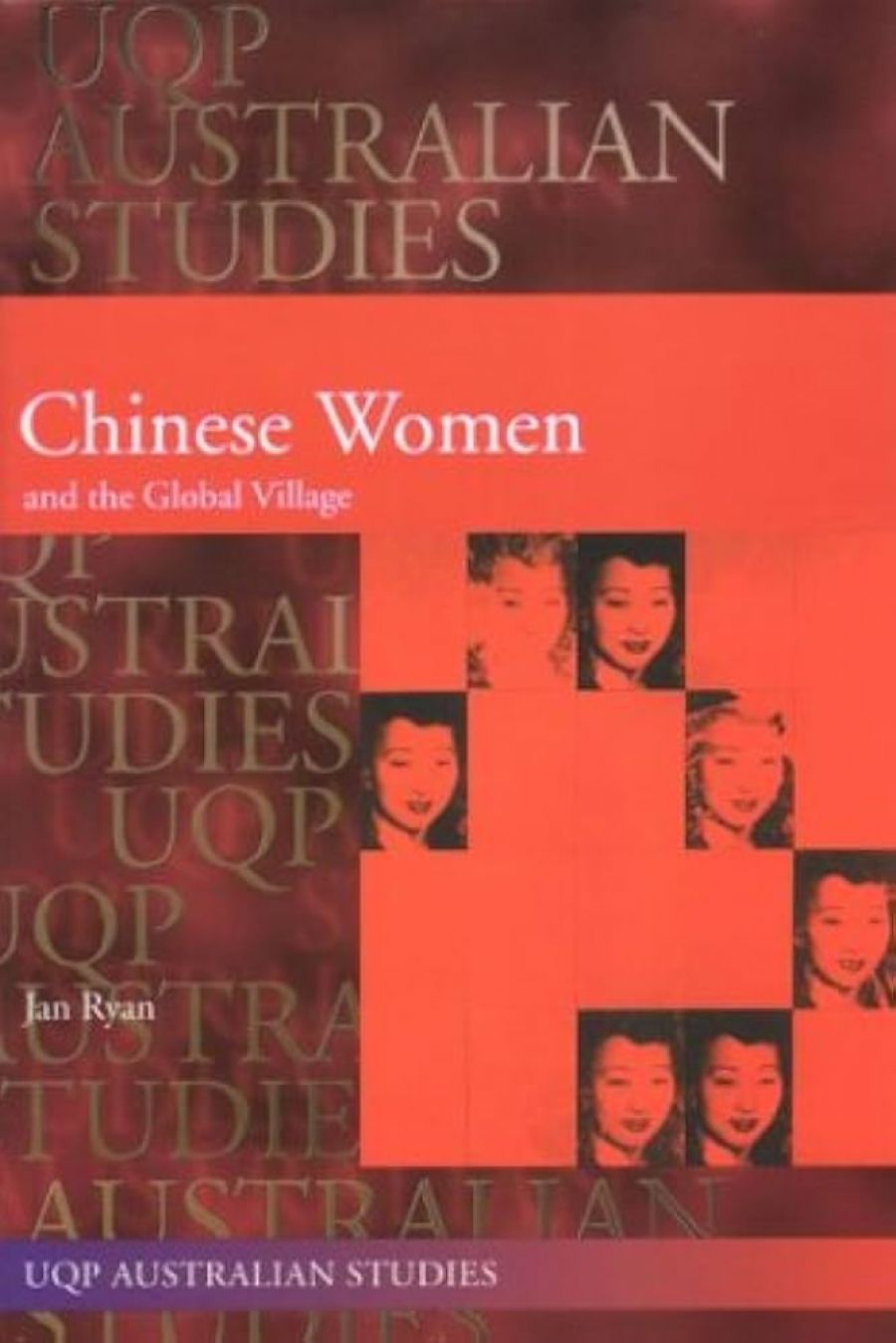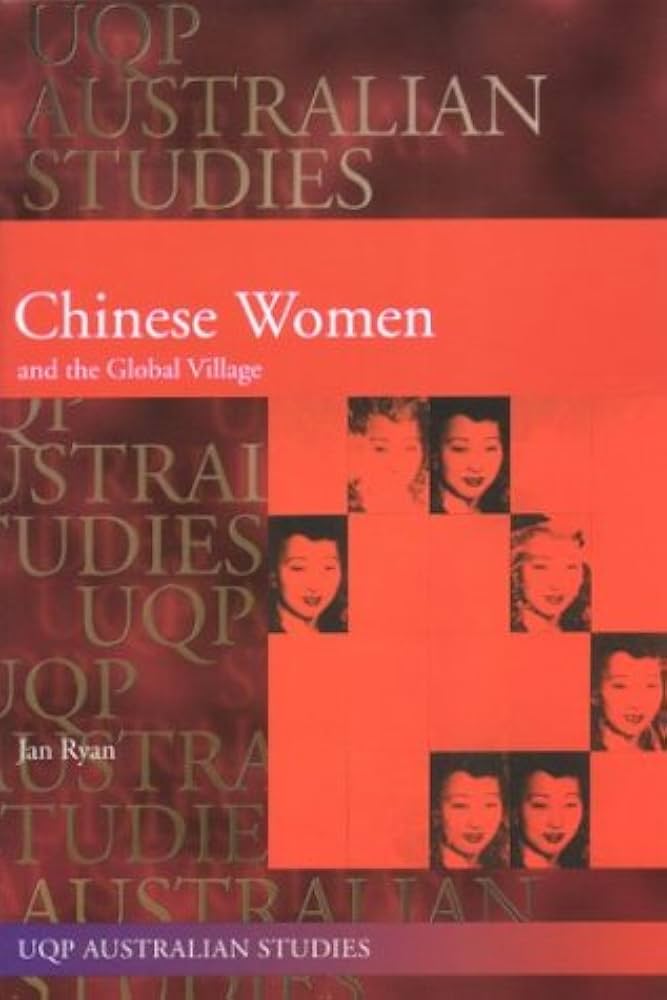
- Free Article: No
- Contents Category: Cultural Studies
- Review Article: Yes
- Online Only: No
- Custom Highlight Text:
Mai Ho and her two baby daughters huddled together in a crowded Vietnamese refugee boat. In the dark hull, they could sec equally frightened strangers. The nineteen-year-old mother thought of the husband she had left behind and of her future in a foreign land:
Her two dishevelled little girls lay across her bosom and the taint of their urine blended with the sour odour of her dress. ‘They would like to go to the toilet but they would have to crawl across too many people and that would make noise so I said to them that they can just pass water on me. So my clothes from the waist down [were] very itchy, lots of rash.’
- Book 1 Title: Chinese Women and the Global Village
- Book 1 Biblio: UQP, $30 pb, 209 pp
- Book 1 Cover Small (400 x 600):

- Book 1 Cover (800 x 1200):

She eventually landed in Melbourne via a Malaysian refugee camp. She struggled as a farmhand, in a car assembly plant, and in an English language class. That struggle led to two tertiary degrees, a cosmetics and skin-care business, and the mayoral robes at Maribyrnong Council. Her daughter Tan Le, a Law/Commerce student, was 1998 Young Australian of the Year.
Mai Ho is one of fifty women who were interviewed – some through an interpreter – and who feature in Jan Ryan’s book, described as ‘the first major study of Chinese women in Australia’. Most are first-generation settlers from South-East Asia, Hong Kong, Taiwan, or mainland China. The exodus of women from Asia has led to women now outnumbering men as migrants to Australia. Some left as refugees, others as students or professionals. On average, these Asian-born Australians are more educated than Australian-born women.
Ryan, an associate professor in modem Chinese history at Edith Cowan University, is respected for her research on the Australian Chinese. Her first book, Ancestors: Chinese in Colonial Australia (1995), is concerned with Chinese in her home state of Western Australia. Chinese Women and the Global Village examines the role of women in Chinese families; the workplace; the importance of community associations; and the immigrants’ difficulty in self-perception: are they Chinese or Australian?
Women seldom feature in earlier books on the Australian Chinese, partly because they were left in China when their men rushed to the goldfields. Today, the women live here while many of their partners return to work in Asia. Divorce and the migration of single mothers distinguish the new Australian Chinese.
Other scholars have tended to focus on pre-World War II miners and merchants and their Australian-born descendants, only a few of whom appear on Ryan’s pages: notably the daughter of a tomato packer, Irene Moss, who became Race Discrimination Commissioner of the Human Rights and Equal Opportunity Commission; broadcaster Annette Shun Wah; and filmmaker Lisa Wang, daughter of the late businessman David Wang, Melbourne’s first City Councillor of Chinese descent.
Most of Ryan’s subjects are not Australian-born and not bred in the era of assimilation. Their experience here is generally from the 1970s, after Canberra’s recognition of Beijing and the end of the White Australia Policy. These newcomers celebrate their Chinese identity. They’re encouraged to preserve their traditional culture and regional links by both Liberal and Labor Parties competing for the multicultural vote. Significantly, these Chinese women speak some form of Chinese, increasingly the official tongue, Mandarin.
Two of the women surveyed are former politicians. Hong Kong-born Helen Sham-Ho arrived as a student in 1961 and was elected to the NSW parliament in 1988, ‘the greatest moment in her life’. Former South Australian MLA Bernice Pfitzner is from Singapore, where her grandfather landed as an orphan in a basket, rather like Oscar Wilde’s Ernest, who was found in a handbag. She was educated in Australia, married a German-born man, and told interviewer Diana Giese: ‘I never see myself as Chinese looking and Asian and small and darkhaired with almond eyes. I really don’t now. I see you and when I look at you I look a bit like you, and when I look at my Chinese friends, I look a bit like them.’
The experience of Zhou Ji-ping from Guangzhou (Canton) is different. She came in 1987 and, after gaining Australian citizenship, was ‘very panicky ... totally incompatible with this world’. She eats Chinese food, wears Chinese clothes, and speaks Chinese: ‘I felt myself neither Chinese nor Australian. I lost myself.’
Although the women as a whole prefer the friendship of other Chinese people, there’s friction between those born on the mainland and in South-East Asia. Zhou Ji-ping claims Singaporeans and Malaysians look down on mainlanders. Yet her comments reveal mainlander superiority. She points to Singapore’s ‘old-fashioned Chinese’ practice of the lion dance, which she says is found only in rural China.
The case of Xu Li-ping mirrors that of many skilled European migrants who abandoned a career at home. A nurse in China, Xu couldn’t find similar work here: ‘They said I need ... Western qualifications and English skills. They don’t like the degree I got in China.’ A Singaporean Chinese employed her to bake cakes.
Unfortunately, this book, part of UQP’s scholarly series, suffers from the weasel word virus attacked by Don Watson in Death Sentence. It’s infected by numbing slabs of prose such as: ‘Visual appearances [as distinct from non-visual ones?] trigger a raft of representations, impacted by historical and contemporary knowledges that clearly influence Western constructions of Chinese women ... ‘
The women themselves speak with honesty, passion, and conviction.


Comments powered by CComment